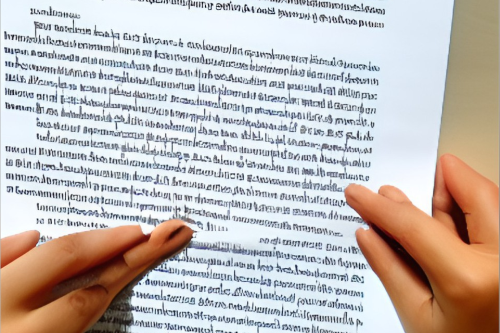
A fictional language is a fictional tongue, often made up by one individual. By contrast, a natural language is an inherited heritage that evolves out of a culture. In a conlang, there may be group participation.
Here are a few examples of fictional languages. Listed below are some examples of their use in literature and film. Read on to learn more about them!
Contents
Dothraki is a fictional language
Unless you’re a true Game of Thrones fan, you’ve probably been wondering what Dothraki is. The language is based on the Valyrian language that originated in the Ghiscari Empire, about three hundred years ago. The language is similar to Low Valyrian, which was the common language of the Dothraki until the High Valyrians from Pentosi invaded the empire. The High Valyrians took their new language and renamed themselves Maegi to make themselves more recognizable to those who survived. Daenerys Targaryen learns Dothraki through a book written by her brother Viserys, who was exiled from Westeros as a child.
The Dothraki language was created by linguist David J. Peterson for the popular HBO show Game of Thrones. The language is based on languages such as Estonian, Turkish, Russian, and Swahili. Some of the words in the series were borrowed from other languages, while others were derived from other ones. However, there is no official Dothraki dictionary, so learning the language is a great way to immerse yourself in the show and learn its culture and vocabulary.
As a result, it’s possible to learn Dothraki using linguistic tools and typological data. One of these tools is Greenberg’s work on linguistic universals. Greenberg’s work has remained relevant and widely used. The principles he developed will be applied to the Dothraki language. While the course itself is free, you can purchase an ad-free interface.
Quenya is a fictional language of the elves
In the Middle-earth mythos, the Elves speak a language known as Quenya, which developed in Valinor and was spoken by the Noldor and Vanyar. The language evolved into its own distinctive features in Middle-earth, where it became a minority language. However, Quenya remained widely used among the Noldor as a cultured language.
While most people in the world do not speak the Quenya language, this language was spoken by the Elves and Ents during the Third Age. Men and Elves spoke Sindarin and Westron, but the elves used Quenya for official names, writing, and ceremonies. Tolkien called it Elven-Latin, and it can be written in many alphabets. However, the most common form of the language is Tengwar.
In The Lord of the Rings, Tolkien featured the Quenya language. Later, in the posthumous Middle-earth history The Silmarillion, he used the language in several places. The longest published piece of Quenya is the poem “Namarie.” There are still many unpublished works in Quenya. Some scholars have published scholarly analyses of the language, and Tolkien fans have written poetry in Quenya since the 1970s.
The most famous piece of Quenya in The Lord of the Rings is the song “Aldudenie”, which is translated into English as “Galadriel’s Lament”. The standard version of Quenya is influenced by Finnish phonology and has the strictest rules when it comes to consonant clusters. However, Tolkien was also fond of Italian, and Vanyarin Quenya retains features from that language.
Lapine is a fictional language of the rabbit protagonists in Watership Down
In his novel Watership Down, Richard Adams describes a fictional language spoken by rabbits called ‘Lapine.’ Lapine is derived from the French word for rabbit, and the fictional language is largely used by the rabbits to describe their society, naming other rabbits and expressing concepts that are unique to rabbits. Lapine is a language of a few dozen words.
The Lapine language of the rabbits in Watership Down is very similar to the slang that humans use in the English language. For example, the word “crixa” means “center” in Lapine, while the word for “beast” means “deadly.” The language is intended for children, and is reminiscent of the tolkien-like language of Middle English.
The fictional language of the rabbits in Watership Down is called Lapine. Pipkin is the youngest of the protagonists, and is a shy buck rabbit. He grows up to become a loyal companion to Hazel and provides comfort for Holly. He is the first to jump into the River Test when Hazel orders. In Lapin, he is known as “Hlao-roo.”
The rabbits in Watership Down speak Lapine, and many words are derived from it. A common word for a rabbit is “hlao”. Another word for a rabbit’s name is “hrair”, which means thousand or five. The characters in the novel often refer to their hutch doe Haystack as “Hlao-ro.”



Newspeak is a fictional language of Cthulhu
According to the fiction, the ancient cosmic dieties speak a mysterious language called racter. Lovecraft first described it in a 1925 short story. Later, this language appeared in additional works and gained more fame and notoriety. This language was an answer to the question of what deep ones speak. To learn it, you would need to be a dedicated occultist and possess an all-powerful miasma.
A number of mythical creatures are said to have been able to communicate with humans. Lovecraft portrayed creatures who communicated with humans by telepathy and caused them to shed their skins after they died. According to some sources, the language may be similar to the Welsh and German languages, and could also include elements from Southwest Asian and Arabic languages. While the language is fictional, it offers an interesting look into Cthulhu culture.
Esperanto is a fictional language
A fictional language is one that is not used by real people. The first known example of an Esperanto language was created by a man named Zamenhof in 1887. Zamenhof’s effort culminated in the publication of Unua Libro, which means “First Book.” The language consists of 920 word roots and 16 grammatical rules. There are currently over 1 million speakers of Esperanto.
Many people may be skeptical about the language’s origin, but this is not necessarily the case. The language was created by a Polish ophthalmologist Ludwik Zamenhof to create an easy-to-learn language that could eventually become a world language. The creator hoped the language would facilitate international trade, communication, and peace. Interestingly enough, the language’s creator was a fan of Tolkien as well.
Although Esperanto was originally thought of as a futuristic language, the language has not gained much popularity. There is currently one speaker of the language – Dr. Zamenhof – and a small community of two to four million people. Despite its low profile, Esperanto has great potential for future communication. If only it could be translated by more people. It isn’t entirely a linguistic language, though, with most words being derived from English and other European languages.
The concept of creating an entire language solely for fictional use is much older than most people may realize. It is much simpler to create a language that is tied to a fictional setting than it is to create a language with no real use. People who speak Esperanto are known as Esperantists. In addition to this, there are a large number of native speakers. But what about people who do not speak the language?
Huttese is a fictional language
The Huttese language is a fictional one. Although it is very similar to Quechua in its fundamental characteristics, it has no real language. Huttese is a fictional language invented by a writer to portray a fantasy world. As such, it is difficult to find a definitive reference work about Huttese. However, you can look for a reference work in bookstores, libraries, and online.
A fictional language from the Star Wars universe, Huttese was developed by Ben Burtt for the films “Star Wars” and “Return of the Jedi.” It was originally intended to be similar to Slavic languages, such as Russian or Polish. In the “Star Wars” universe, the Huttese language is spoken by various characters, including Jabba the Hutt and his droid C-3PO.
Conlangers study fictional languages. The Huttes speak the fictional language Huttese, which translates as “Glorious Jewel”. The language is also known as Nal Hutta, which is a paradise for the Huttes. For more information about Huttese, check out the Conlang.org website. If you’re looking for a conlanger, make sure to ask him a question at a sci-fi convention.














